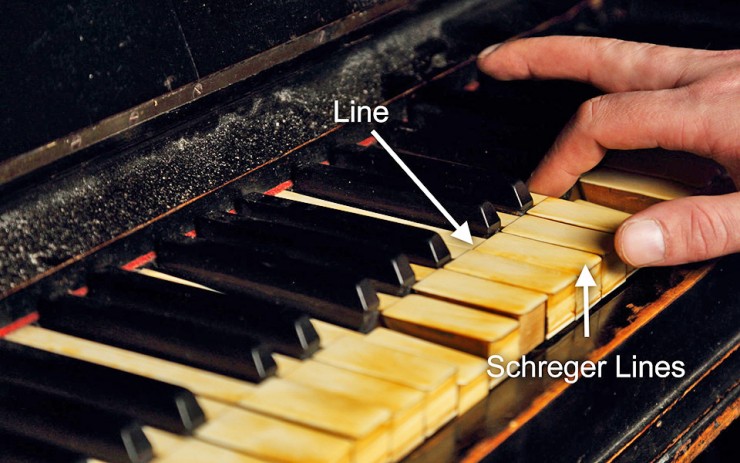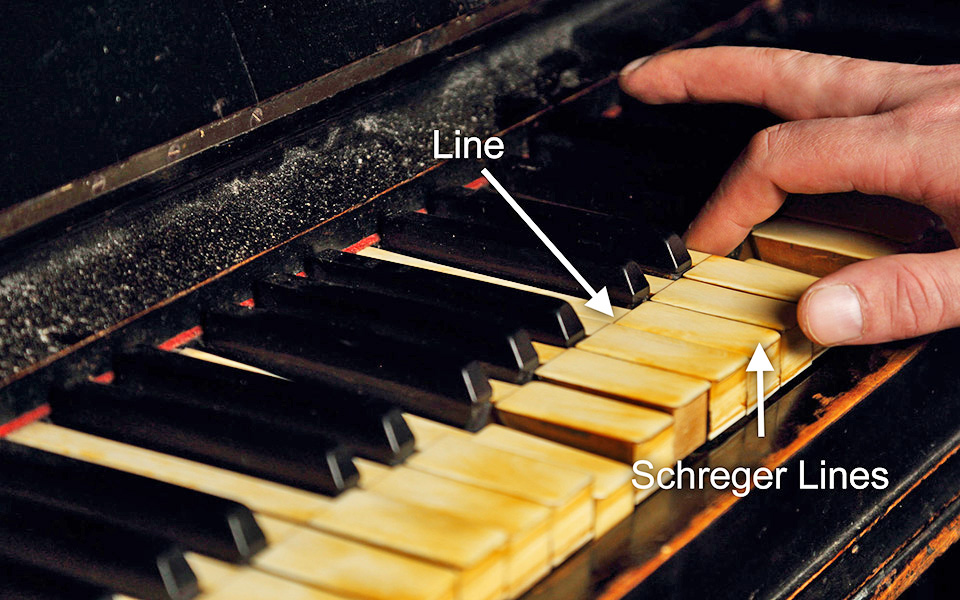Pianos are not made out of elephants. The misconception arises from the use of ivory in historic piano keys.
The elegance and grandeur of a piano often conjure images of classical music and refined craftsmanship. Historically, piano keys were indeed crafted from ivory, a material sourced from the tusks of elephants. This practice has been discontinued due to ethical concerns and protective legislation for elephants, whose populations have been heavily impacted by poaching.
Today, modern pianos use synthetic materials or other types of wood that emulate ivory’s properties without harming wildlife. The transformation in materials reflects the music industry’s commitment to conservation and innovation, ensuring that the beauty of piano music can be enjoyed responsibly. Musicians, enthusiasts, and conservationists alike can appreciate the sustainable practices that now define the production of this iconic instrument.
The History Of Piano Materials
The piano, with its rich sound and majestic form, has a fascinating history in terms of construction materials. Over time, these materials have evolved significantly, reflecting the changing technologies and aesthetic values of different eras.
Early Origins And Materials
The inception of the piano can be traced back to early keyboard instruments. During these early stages, makers primarily employed natural materials. Woods such as spruce, fir, and beech formed the structural framework of these instruments. Keys were often crafted from light woods like basswood, topped with thin pieces of ebony or ivory.
Ivory, derived from elephant tusks, was a prized material for its smooth texture and inherent beauty. It symbolized prestige and quality in piano craftsmanship. The phrase “pianos made out of elephants” typically refers to ivory usage for keys, but no other parts of the piano incorporated elephant-derived materials.
Transition To Modern Materials
As values shifted and technological advancements occurred, piano manufacturing adapted. The industry moved away from using ivory due to ethical concerns and conservation efforts. Plastic composites and acrylics replaced ivory, mirroring the look and feel without the ethical downside. Modern pianos exploit a blend of new materials to enhance durability, playability, and tone quality.
- Hammers now often use advanced felt compositions.
- Frame and strings utilize strong metals for better tension management.
- Cabinetry and structural parts continue to be wood, but with improved treatments and combinations for acoustic properties.
Today’s pianos represent centuries of evolution, a blend of art, craftsmanship, and technology, producing instruments that are both visually stunning and sonically superior.

Credit: www.thepiano.sg
Myths Surrounding Piano Composition
Pianos carry a rich history filled with craftsmanship. Yet, some tales about their make-up are far from true. One such tale is that pianos are made of elephants. Let’s unveil the truth behind the materials used in pianos and address common misunderstandings.
The Elephant Ivory Legacy
In the past, ivory from elephant tusks was indeed a choice material for piano keys. Its unique feel and aesthetic appeal made it prized among piano manufacturers. However, as conservation efforts grew, so did the shift to more sustainable materials. Today’s pianos use alternative, eco-friendly materials for their keys.
Misconceptions Debunked
A common misconception is that pianos still contain elements from elephants. This is now a fabled notion. Modern pianos are completely free from any elephant-derived materials. The keys are typically made from plastics or composites that mimic the ivory’s characteristics without harming any wildlife.
| Old Material | New Materials |
|---|---|
| Ivory | Plastics, Composites |
- Synthetic ivory or acrylic is the norm.
- Legislation in many countries has banned the trade of ivory.
- Pianos have evolved with sustainable innovation.
Elephant Ivory And Pianos
For many years, beautiful pianos have been made with a special material. This material comes from elephants’ tusks. It is called ivory. People liked it because it was strong and looked pretty. But now, we know it hurts elephants, so we make pianos in new ways to keep elephants safe.
Ivory In Keyboard Manufacturing
Long ago, piano keys were often white with ivory on top. The ivory came from big animals called elephants. The top part of the elephants’ tusks was taken to make these keys. Pianos were famous for these shiny, smooth ivory keys. Over time, making piano keys changed to help elephants and use other materials.
Here’s how piano keys with ivory were made:
- Cutting: Workers cut the ivory from tusks into thin pieces.
- Shaping: They made the pieces the right shape for piano keys.
- Polishing: They smoothed the ivory so it was nice to touch.
Ethical Concerns And Legal Restrictions
Using ivory for piano keys makes life very hard for elephants. People saw this problem and worked to stop it. Now, there are strict rules to keep elephants safe.
| Year | Action |
|---|---|
| 1975 | CITES agreement to control ivory trade |
| 1989 | Global ban on elephant ivory trade |
| 1990 | USA joins the ivory ban |
Companies now use different materials for piano keys. These materials come from safe sources and don’t hurt animals. This change helps protect elephants.

Credit: www.npr.org
Alternatives To Ivory Keyboards
The history of pianos intertwines with a dark fact: ivory, from elephant tusks, once covered piano keys. Today, we turn to alternatives to ivory keyboards. These alternatives not only protect wildlife but they also offer durability and a consistent playing experience for pianists around the world. As we delve into these alternatives, we’ll explore the modern advancements in synthetic materials and the industry’s commitment to conservation-friendly pianos.
Advancements In Synthetic Materials
Manufacturers have made groundbreaking strides in creating ivory-like materials. These not only resemble the touch of ivory but are also eco-friendly. Let’s see what these materials offer:
- Acrylonitrile Butadiene Styrene (ABS): A tough plastic used for its strength and durability.
- Phenolic Resin: Mimics the fine grain of ivory and offers a moisture-resistant surface.
- Composite Materials: Blend various substances for a fine, ivory-esque finish.
These materials are widely adopted for their practical benefits. They withstand temperature fluctuations and wear from frequent use. This makes them ideal for both household and concert settings.
The Shift To Conservation-friendly Pianos
The piano industry’s shift to conservation-friendly materials plays a vital role in wildlife protection. Companies are now ensuring their pianos are 100% ivory-free. This reflects a commitment to ethical practices. Here are the key points:
- Piano makers highlight the use of alternative materials in their product designs.
- Educational and awareness campaigns inform buyers about the importance of choosing ivory-free pianos.
- Some makers contribute to conservation efforts, reinvesting part of their profits to wildlife protection.
This transition demonstrates an industry-wide dedication to sustainability and ethical manufacturing. By choosing these pianos, consumers actively participate in a movement that values ecological balance and the preservation of endangered species.
Preservation Of Antique Pianos
When we talk about Preservation of Antique Pianos, we step into a world where history resonates in every chord. These historical instruments carry stories from the past. Antique pianos are treasures, reflecting skilled craftsmanship and the earth’s rich materials once used in their creation. They deserve careful preservation to maintain their cultural and aesthetic value.
Restoration Challenges
Antique piano restoration presents unique challenges. Experts handle delicate materials and intricate designs. They must know old-world techniques. Often, replacement parts are rare or must be custom-made, demanding extensive work.
- Finding authentic materials can be a complex task.
- Master craftsmen are essential for preserving historical accuracy.
- Aging wood and felt require gentle, skilled hands for repair.
The Debate Over Refurbishment Vs. Preservation
Refurbishment and preservation often lead to debate among piano enthusiasts and conservators. To refurbish means to make like new, possibly altering the original character. To preserve is to maintain the piano in its current form.
| Refurbishment | Preservation |
|---|---|
| May involve modern parts. | Focuses on historical authenticity. |
| Can change sound and appearance. | Retains original sound and patina. |
| Suitable for heavy use. | Often for display or light use. |
Careful consideration is necessary to decide whether to refurbish or preserve. It depends on the piano’s condition, historical value, and intended use. Both approaches serve to honor the piano’s legacy, albeit in different ways.
Impact On Modern Piano Manufacturing
The creation of pianos has evolved over time. In the past, elephant ivory was a common material for piano keys. Yet, awareness and laws have changed this. Modern pianos don’t have ivory. They use materials safer for our planet.
Sustainable Practices In Production
Piano makers now prioritize the earth’s well-being. They use eco-friendly resources to lower harm. These practices include:
- Using recycled or renewable materials for parts
- Reducing waste through precision manufacturing
- Applying energy-efficient methods
This approach helps protect nature. It also meets the demand for ethical products. Choosing sustainable tools is a key goal for manufacturers.
Consumer Awareness And Choice
Buyers today are informed and caring. They seek out pianos that do no harm to animals. This demand drives change in the piano industry. Factories respond by making pianos with no animal materials. Choices now include:
- Acrylic or plastic composites for keys
- Wood from forests that are managed well
- Animal-friendly glues and finishes
Consumers have power through their purchases. They inspire more respect for life. Their choices support a responsible music industry.

Credit: www.thepiano.sg
Can Uhaul’s Piano Dollies Be Used to Transport Pianos Made Out of Elephants?
Uhaul’s piano dollies are designed to safely transport pianos, but they are not suitable for pianos made out of elephants. These specialized piano dollies at Uhaul are meant for standard-sized pianos and may not be able to support the weight and size of a piano made from elephants.
Frequently Asked Questions For Are Pianos Made Out Of Elephants
Are Pianos Made With Elephants?
No, modern pianos are not made with elephant parts. Historically, some pianos used elephant ivory for keys, but this practice has ceased due to conservation laws and ethical concerns.
What Are Pianos Made Of?
Pianos primarily consist of wood, metal, and felt. Woods like spruce and maple create the soundboard and frame, while precision-cast iron forms the plate. Keys combine softer woods, and hammers are topped with dense wool felt.
Do Pianos Still Use Ivory?
Modern pianos no longer use ivory due to legal restrictions and conservation efforts. Manufacturers now favor synthetic materials or alternative natural products for piano keys.
What Animal Is Used To Make Piano Keys?
Historically, piano keys were made from ivory obtained from elephant tusks. Modern pianos use plastic to mimic ivory’s qualities and appearance.
Conclusion
It’s clear that pianos are not constructed from elephant tusks. Our responsibility to protect wildlife remains paramount as we enjoy musical artistry. Choose ethically sourced materials and support conservation. Music and respect for nature can harmoniously coexist. Let’s keep the elephants safe, and the music flowing.
